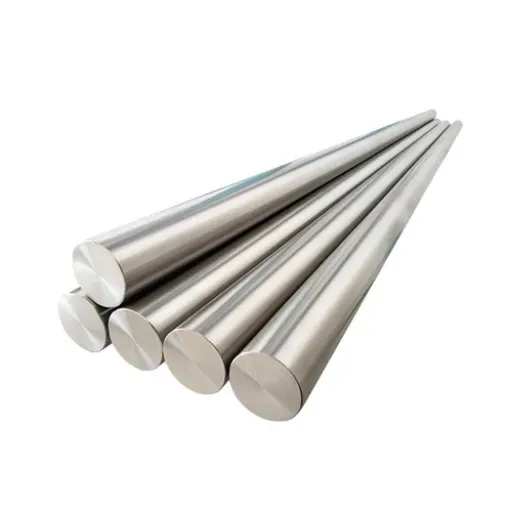When it comes to materials widely used in various industries, 308 stainless steel stands out for its unique combination of properties. Known for its exceptional corrosion resistance, heat tolerance, and mechanical strength, 308 stainless steel has become a preferred choice in applications ranging from welding to industrial manufacturing and beyond. This article dives deep into the characteristics that make 308 stainless steel so versatile, exploring its composition, performance attributes, and common areas of use. Whether you’re a professional working with this material or simply curious about its significance, this comprehensive guide will provide valuable insights into why 308 stainless steel is such a vital component in modern engineering and construction.
What is 308 Stainless Steel?
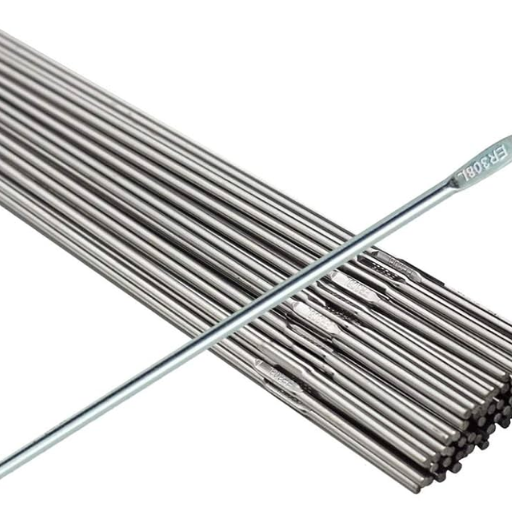
308 stainless steel is an alloy that mainly consists of iron, chromium, and nickel, and contains lesser quantities of carbon, manganese, and silicon. 308 stainless steel is popular in welding applications because of its unique properties is known for its outstanding corrosion resistance, tensile strength on heat, and ease of fabrication. It is commonly used as a filler wire for welding similar grades of stainless steel. Its versatility makes it a prime candidate in construction, food equipment manufacturing, and even chemical processing industries.
Understanding the chemical composition of 308
The chemical composition of 308 stainless steel is carefully balanced to provide its robust properties, particularly in applications requiring corrosion resistance and high-temperature performance. It primarily contains iron, with approximately 19-21% chromium and 9-11% nickel, which are key elements in enhancing resistance to oxidation and corrosion. Minor quantities of carbon, manganese, and silicon, typically less than 2%, contribute to its structural integrity, workability, and durability. Sulfur and phosphorus are also present in trace amounts, usually kept under 0.03% to maintain cleanliness and reduce brittleness. This well-rounded composition makes 308 stainless steel suitable for demanding environments while maintaining ease of fabrication and excellent weldability.
Exploring the mechanical properties of 308
The mechanical properties of 308 stainless steel highlight its impressive strength and versatility for industrial applications. With a tensile strength of approximately 75,000 psi (515 MPa) and a yield strength of 30,000 psi (205 MPa), this alloy can withstand significant stress without permanent deformation. The material’s elongation at break is about 40%, showcasing its excellent ductility. Furthermore, 308 stainless steel has a hardness ranging between Brinell 170 and 200, ensuring a balance of toughness and resistance to wear. Its mechanical performance remains consistent even in challenging environments due to its corrosion resistance and ability to maintain structural integrity under high temperatures. These properties make 308 stainless steel a reliable choice for fabrication, welding, and high-stress industrial uses.
Applications and uses in various industries
Due to its strength, durability, and resistance to corrosion, 308 stainless steel finds use in multiple industries. It is customarily employed in the construction industry for structural parts, supports, and fixtures that have to endure difficult environmental conditions. The food processing industry makes use of its hygienic features for food grade equipment such as storage tanks, piping, and utensils, which are easy to sanitize and resist acidic substances. Moreover, 308 stainless steel is used in the chemical and petrochemical industries for the fabrication of heat exchangers, pressure vessels, and pipelines because of their sustained exposure to high temperatures and corrosive materials. His wide range of applications proves that this material is of vital importance in modern industry.
How Does 308 Stainless Steel Compare to Other Stainless Steels?
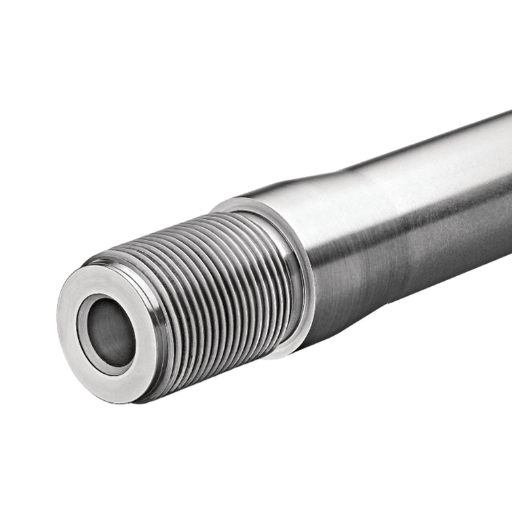
308 stainless steel stands out due to its balanced combination of strength, corrosion resistance, and affordability. Compared to 304 stainless steel, 308 offers slightly higher resistance to oxidation at elevated temperatures, making it better suited for high-heat applications. While 316 stainless steel exceeds 308 in corrosion resistance due to its molybdenum content, 308 remains a cost-effective choice for environments with moderate exposure to corrosive agents. Additionally, 308 stainless steel is often used in welding applications where compatibility with certain grades, like 304, is required, showcasing its versatility.
Differentiating between 308 vs 316 stainless steel
When comparing 308 and 316 stainless steel, the key difference lies in their composition and resulting properties. Type 308 stainless steel is primarily made of iron, chromium, and nickel, with trace elements that enhance its overall durability and weldability. It is often chosen for general-purpose welding, especially when working with 304-grade stainless steel, due to its compatibility and cost-effectiveness.
On the other hand, 316 stainless steel incorporates molybdenum into its composition, significantly boosting its resistance to pitting and crevice corrosion, particularly in chloride-rich environments such as marine settings. This added corrosion resistance and stronger performance under harsh chemical exposure make 316 ideal for highly demanding applications, such as medical instruments, coastal structures, and food processing equipment.
While 316 is superior in terms of corrosion resistance and strength in aggressive conditions, 308 remains a practical option for less extreme environments, offering good performance at a lower cost, often in welding or manufacturing scenarios. Choosing between these two grades largely depends on the specific environmental and operational demands of your project.
Comparative corrosion resistance of 308 and 316
When it comes to corrosion resistance, 316 stainless steel outperforms 308, particularly in environments with high levels of chloride, such as marine or coastal areas. The added molybdenum in 316 significantly enhances its resistance to pitting and crevice corrosion compared to 308. While both grades share excellent general corrosion resistance due to their chromium and nickel composition, 308 is better suited for less aggressive environments. For applications exposed to harsh chemicals, saltwater, or extreme environmental conditions, 316 is the preferred choice, while 308 remains a cost-effective option for general-purpose needs.
Why choose grade 308 over other types?
For applications that require dependability at a reasonable price, grade 308 stainless steel is a suitable option. Its high chromium and nickel content provides good protection against oxidation and corrosion for welding and structural applications. In addition, 308 is well known for being used in most standard operating environments since it is versatile and retains strength and durability. It is a cost-effective solution because, in comparison with other types, it meets performance requirements while maintaining quality.
What are the Processing Characteristics of 308 Stainless Steel?
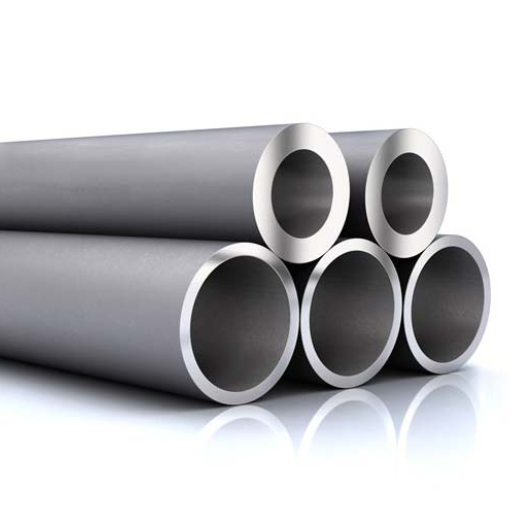
308 stainless steel exhibits excellent processing characteristics, making it suitable for a variety of industrial applications. It demonstrates good weldability, particularly with TIG and MIG welding techniques, due to its low carbon content, which helps minimize carbide precipitation. Additionally, it is easy to machine and form under standard conditions, ensuring efficiency during manufacturing. Its high corrosion resistance allows it to maintain integrity even after undergoing thermal or mechanical processing, contributing to its reliability and performance in demanding environments.
Welding applications for 308
308 stainless steel is commonly used in welding due to its versatility and durability. This alloy is specifically suited for joining 304 and 304L stainless steels, as it provides excellent corrosion resistance and maintains mechanical strength after welding. It is widely utilized in fabrications exposed to high temperatures or harsh environments, such as petrochemical plants, food processing equipment, and heat exchangers. Its low carbon content reduces the risk of carbide precipitation while welding, preserving the material’s structural integrity and resistance to intergranular corrosion. Furthermore, 308 filler metal is often chosen for applications requiring strong crack resistance and superior weld quality, making it ideal for pipelines, tanks, and structural assemblies.
Working with filler material in 308
When working with 308 filler material, it is crucial to recognize its versatility and performance in welding a variety of stainless steels, particularly 304 and 304L grades. The filler material ensures excellent corrosion resistance, especially in oxidizing environments, due to its high chromium and nickel content. It maintains stability across a wide temperature range, making it suitable for both cryogenic applications and elevated heat settings.
Additionally, the low carbon content minimizes the risk of carbide precipitation during welding, which is essential for preserving structural integrity in demanding environments. Typical uses of 308 filler material include fabricating chemical processing tanks, industrial piping, and food-grade equipment. Its adaptability, combined with impressive crack resistance, supports consistent weld quality even in challenging industrial conditions.
When selecting a filler material, it’s important to match the mechanical properties and corrosion resistance requirements of the base metal to ensure optimal performance and durability of the weld.
Challenges in welding 304 stainless steel with 308
Welding 304 stainless steel with 308 filler material presents several challenges, primarily related to potential weld defects and environmental factors. One common issue is the risk of carbide precipitation in the heat-affected zone, which can reduce corrosion resistance, particularly in high-temperature or chloride-rich environments. Proper heat control and techniques like post-weld heat treatment or using low-carbon fillers like 308L can minimize this risk.
Another challenge is maintaining proper fusion and avoiding cracking, particularly hot cracking, during the weld. This often requires precise control over the welding parameters, joint preparation, and filler deposition. Additionally, the surface condition of 304 stainless steel can impact weld quality; removing contaminants, oxides, or coatings is essential to ensure a clean weld.
Lastly, managing thermal expansion is critical, as 304 stainless steel has higher thermal expansion compared to some metals. Distortion or warping may occur if not accounted for, necessitating careful clamping and sequencing techniques during welding. Ensuring thorough planning and execution can mitigate these challenges and result in durable, high-quality welds.
What are the Thermal and Physical Properties of 308?
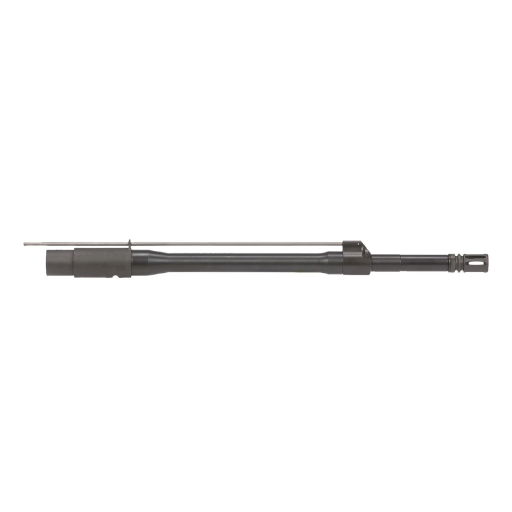
The 308 stainless steel alloy is commonly used for welding applications due to its favorable thermal and physical properties. Its melting range typically falls between 2550°F and 2650°F (1399°C – 1454°C), allowing it to maintain impressive heat resistance. With a coefficient of thermal expansion similar to 304 stainless steel, it expands at approximately 17.2 µin/in°F (0-1200°F), which requires careful management during heating and cooling cycles to prevent distortion. Additionally, 308 offers excellent tensile strength—around 75,000 psi—maintaining durability under stress. Its corrosion resistance is also noteworthy, particularly in environments with exposure to oxidizing agents, making it a reliable choice in many industrial applications.
How thermal properties affect its use
The thermal properties of 308 stainless steel, such as its high heat resistance and controlled thermal expansion, play a critical role in determining its applications. Its melting range of 2550°F to 2650°F enables it to withstand extreme temperatures, making it ideal for use in industries like aerospace, power generation, and heat exchangers. The coefficient of thermal expansion, closely aligned with 304 stainless steel, ensures compatibility in welded structures, minimizing stress between components during thermal cycling. Furthermore, 308’s thermal conductivity ensures effective heat dissipation, which is essential in applications that require consistent performance under high heat conditions, such as industrial furnaces and automotive exhaust systems. These characteristics drive its versatility and reliability in demanding environments.
Exploring the physical properties of 308
The physical properties of 308 stainless steel are what make it a preferred material in a variety of demanding applications. Its density is approximately 7.93 g/cm³, offering robust strength while maintaining a manageable weight. With an impressive tensile strength of around 620 MPa and yield strength of 310 MPa, 308 is engineered for durability, offering resistance to deformation under high stress. The material also boasts excellent corrosion resistance due to its chromium and nickel content, making it suitable for harsh environments, including marine and industrial settings.
Additionally, 308 exhibits a melting range of 2550°F to 2650°F, providing resilience in high-temperature applications. It has a thermal conductivity value of about 16.3 W/m·K, enabling efficient heat dissipation, while its coefficient of thermal expansion (approximately 17.2 µm/m·K) aligns well with compatible alloys like 304 stainless steel, reducing thermal stresses during heating or cooling cycles. These physical attributes, combined with good oxidation resistance and weldability, highlight why 308 excels in applications ranging from structural components to high-heat industrial processes.
308’s performance compared to carbon steel
The evaluation of 308 stainless steel as a carbon steel alloy demonstrates marked differences with specific advantages for stainless steel 308 with superior performance or capability. First, the stainless steel 308 incorporates nickel and chromium which allows for reasonable resistance to corrosion. On the other hand, carbon steel is highly susceptible to rusting or corrosion if it lacks adequate protective coatings or treatments. For this reason, 308 is more suited for industrial and marine uses where there is high salinity, moisture, and chemical exposure.
Furthermore, 308 performs better than carbon steel in high-temperature scenarios. Carbon steel is known to become weaker and more pliable under certain high temperature conditions while 308 remains strong and holds its shape. When compared to standard carbon steel, 308 contributes to a lower melting range of 2550 °F to 2650 °F which allows the alloy to withstand more extreme processes without as much damage.
The disadvantages known for using carbon steel include it being less expensive, but having greater long wrought tensile strength. However, weld strength and thermal expansion mismatch resistance, particularly with other compatible alloys, are some of the counterbalancing advantages provided by 308 steel. These advantages make 308 ideal in situations where high temperature and heat, as well as long-term durability and low maintenance, is needed despite the greater initial material cost.
Why Choose Grade 308 Stainless Steel for Your Project?
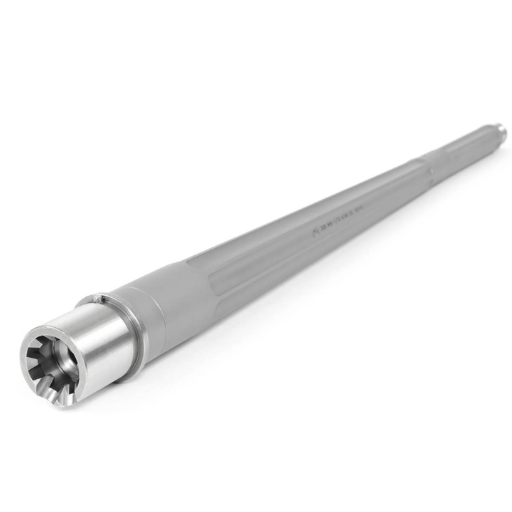
Grade 308 stainless steel is the go-to material for projects requiring exceptional strength, corrosion resistance, and heat tolerance. Its ability to withstand harsh environments—including exposure to chemicals, moisture, and elevated temperatures—ensures long-term reliability and minimal maintenance. Additionally, its superior weldability reduces the risk of cracking during fabrication and enhances compatibility with various alloys. Although it demands a higher upfront cost, its durability and performance make it a cost-effective solution for applications where quality and longevity are paramount.
Benefits of using stainless steel 308
Exceptional Corrosion Resistance
Grade 308 stainless steel offers outstanding resistance to oxidation and corrosion, even in highly corrosive environments. This makes it ideal for use in marine applications, chemical processing, and food industries where exposure to moisture, salts, or acids is a concern.
High-Temperature Performance
Capable of withstanding temperatures up to 1650°F (899°C), stainless steel 308 maintains its structural integrity and performance under high-heat conditions. It is a popular choice for heat exchangers, furnace components, and other high-temperature applications.
Durability and Longevity
Known for its impressive strength and wear resistance, 308 stainless steel provides long-term reliability in demanding environments, reducing the need for frequent replacements and lowering maintenance costs over time.
Superior Weldability
Its excellent compatibility with various welding techniques, including TIG and MIG welding, ensures strong and crack-free joints. This is advantageous for projects where intricate or large-scale fabrication is required.
Versatility Across Industries
Stainless steel 308 is highly adaptable, making it suitable for diverse applications such as construction, automotive parts, kitchen equipment, and medical devices. Its unique combination of strength, heat tolerance, and resistance to corrosion makes it a highly versatile material.
These qualities highlight why Grade 308 stainless steel is a preferred choice for projects demanding premium materials that combine resilience, flexibility, and performance.
Common applications and industries
Grade 308 stainless steel is been used in a number of industries considering its remarkable properties. For example, in construction, it is primary not for structural steel, reinforcements and other architectural features which require high strength and greater resistance to rust. In automotive, it is used in manufacture of diesel and gasoline engine’s exhausts, heat exchangers, and other engine components. In food industry, it is frequently used in the manufacture of cooking appliances, tanks, and food processing equipment because its surface is clean and does not spoil the food. In medicine, stainless steel grade 308 is mostly used to manufacture surgical tools and implants due to their need of clean and dependable equipment. All of these are some of the wide known industries that require very high precision and strict standards needed to be maintained.
Selecting the right stainless steel for your project
Several important factors should be considered in choosing different types of stainless steel for a given project.
Resistance to Corrosion
In assessing the situation, look at what environment the material will be exposed to. For example, marine or high humidity areas may need more corrosion resistant grades such as 316 stainless steel, while general indoor use may do fine with 304 or 308 grades.
Strength and Toughness
Consider the load bearing factors of the project. In case your high strength is required, go for martensitic or duplex stainless steels as they specialize in heavy duty structural or mechanical use.
Ability to Withstand High Temperatures
There are applications that demand extreme temperatures, these would require heat resistant stainless steels. 310 and 321 grades are very helpful under high heat conditions because they are able to withstand high temperatures without affecting the structure.
Fabrication Design
Consider how the stainless steel is going to be worked on. Other grades such as 304 are easier to weld or form which makes them ideal for complex designs while others may require special equipment due to higher hardness.
Cost Consideration
Look into the performance features of the grade and see if it would fit your budget. 304, for example, is economically viable for many uses, but if lower maintenance cost is sought, then spending with 316 may be ideal.
Following these guidelines helps you to align your project objectives with the right grade of stainless steel for optimal efficiency, performance, and durability. For specific guidance, always work with a materials professional.
References
Frequently Asked Questions (FAQ)
Q: What is 308 stainless steel?
A: 308 stainless steel is an austenitic stainless steel, known for its excellent corrosion resistance and strength. It is commonly used in various applications due to its higher chromium content, which enhances its durability and resistance to oxidation.
Q: How does 308 stainless steel compare to 304 and 316 stainless steels?
A: 308 stainless steel is similar to 304 and 316 stainless steels but has unique properties making it preferred for specific applications. It has a higher chromium content than 304, providing better corrosion resistance, and lacks the molybdenum found in 316, which gives 316 better resistance to chlorides.
Q: What are the mechanical properties of 308 stainless steel?
A: The mechanical properties of 308 stainless steel include excellent tensile strength and resistance to high temperatures. This makes it suitable for use in environments where these factors are critical.
Q: In which industries is 308 stainless steel commonly used?
A: 308 stainless steel is used in various applications, including the food and beverage industry, where its corrosion resistance and strength are essential. It is also used in chemical processing and construction due to its durability.
Q: Why is 308 stainless steel preferred for welding applications?
A: 308 stainless steel is preferred for welding applications because it matches the base metal’s composition, especially for welding 304 stainless steels. It is commonly used as a filler metal in welding applications due to its compatibility and mechanical properties.
Q: How does the thermal conductivity of 308 stainless steel compare to other stainless steels?
A: 308 stainless steel has lower thermal conductivity compared to other stainless steels like 304 and 316. This property is essential in applications requiring minimal heat transfer.
Q: What is the difference between AISI 308L and AISI 316 in terms of composition and application?
A: AISI 308L is a low-carbon version of 308 stainless steel, often used in welding applications to prevent carbide precipitation. AISI 316 contains molybdenum, providing enhanced corrosion resistance, especially in marine environments. Both are used in applications requiring strong resistance to corrosion, but AISI 316 is preferred in harsher conditions.
Q: Can 308 stainless steel be used interchangeably with 316 or 316L in welding applications?
A: While 308 stainless steel can be used in some welding applications, 316 or 316L filler material is often preferred when welding austenitic stainless steels exposed to more aggressive environmental conditions due to 316’s enhanced corrosion resistance.
Q: How does chromium content affect the properties of 308 stainless steel?
A: The higher chromium content in 308 stainless steel enhances its corrosion resistance and oxidation resistance, making it suitable for various applications where these properties are crucial.


